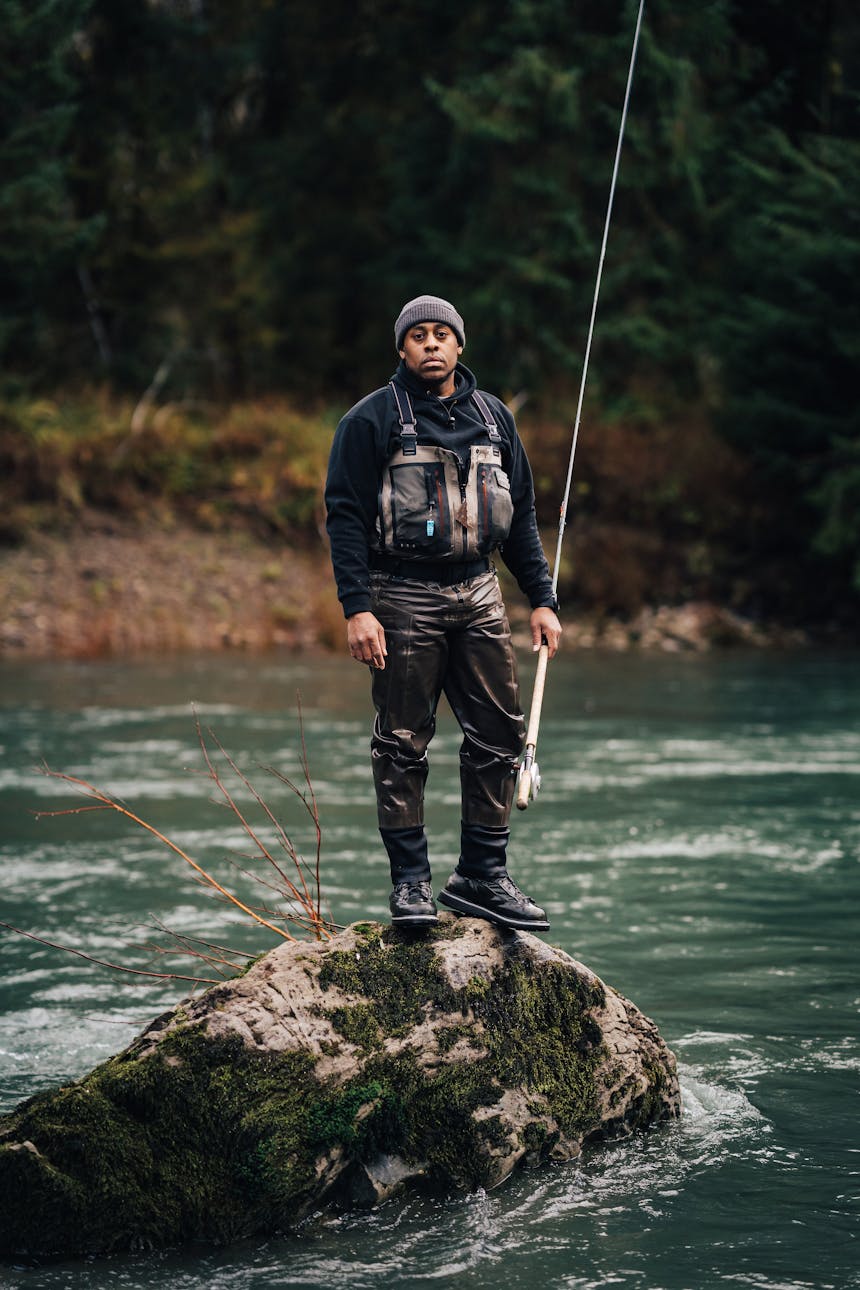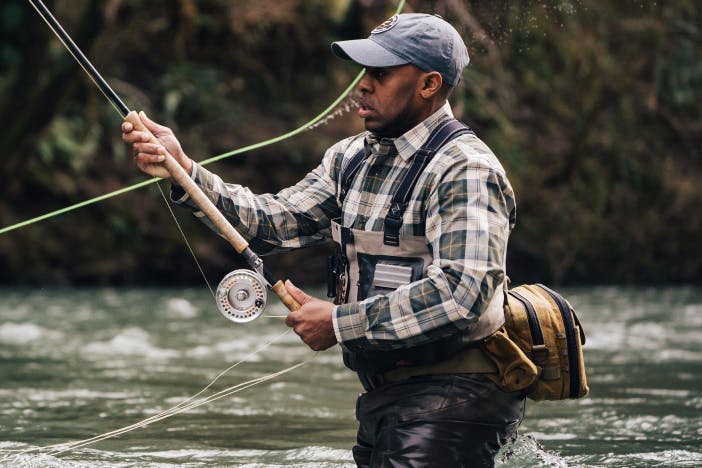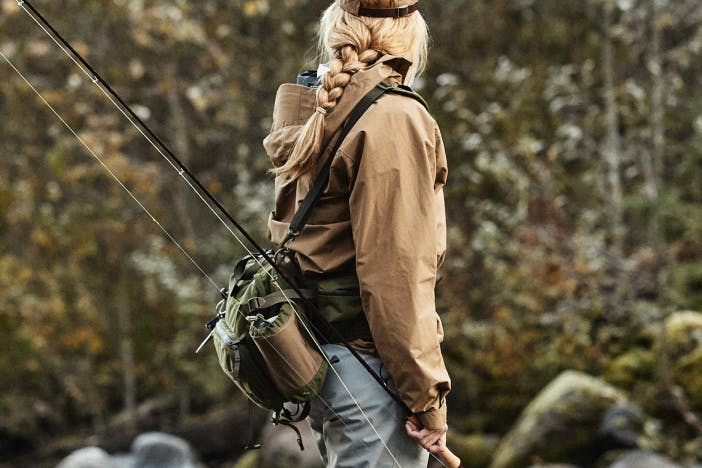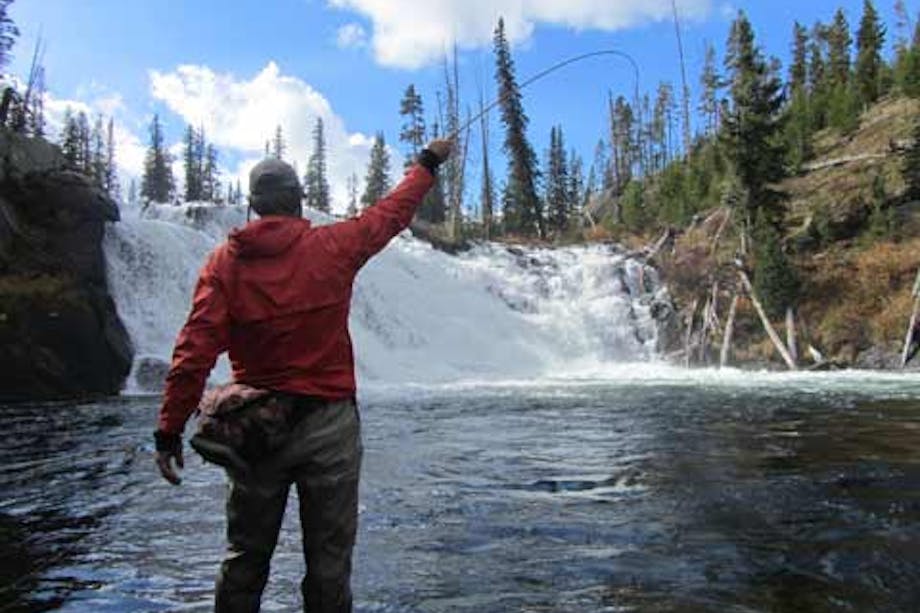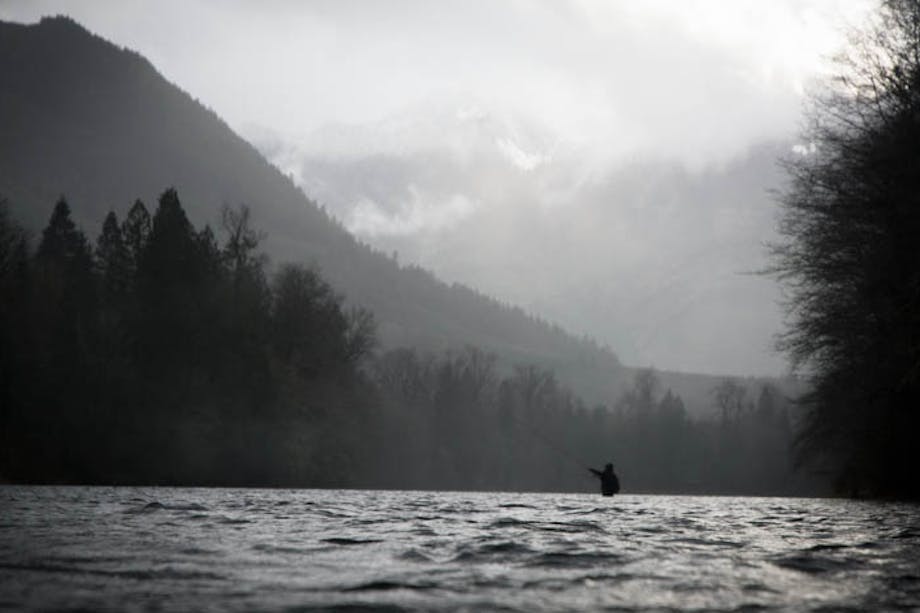Lael Johnson is a fly fisherman and guide on the Olympic Peninsula. His passion for the anadromous fish of Washington’s coastal rivers is contagious. He loves these fish, these rivers, and the people he is lucky enough to experience them with. Filson Contributor Ben Matthews spent a few days on the river with Lael to ask a few questions about guiding, steelhead, and life in general. If you’re interested in heading out on the river with Lael yourself, check out his website and book a trip. You won’t regret it.
HOW DID YOU GET INTO THE GUIDING LIFE THAT YOU’RE NOW LIVING?
As a kid growing up in Kansas, I dreamed of fishing for a living. Once I moved to Seattle, I was able to fulfill that dream and become a guide. In the early 2000s, working as a traveling surgical technologist, I learned of an opening at Seattle Children’s Hospital. I took the position, and what was supposed to be a six-month contract brought me to the place I will live for the rest of my life. After a few years living in Belltown and enjoying city life, I took up snowboarding and fell in love with the mountain air, open spaces, and trees—but something was missing: the river.
I had already become comfortable outdoors, in the mountains, so when a coworker from Children’s invited me to go fishing with him, I said yes without hesitation. We ventured out to a few places and had a great time enjoying the day, but nothing touched our line. It wasn’t until the pink salmon run that I got excited about fishing in the PNW. Pink salmon may be the smallest of the anadromous fish we target, but it was the one that sparked the fire for me to chase fish full time. Once, when I was fishing in West Seattle’s Lincoln Park, a pink salmon broke my favorite bass rod, and I felt the power of this small but strong ocean-going fish—I was hooked! From that moment on, I craved this type of excitement in my life, and I also wanted to share it with others; guiding was the way.

Helping patients in the hospital was and still is a massive part of who I am, but fishing is and always will be my passion. The care and import that I once devoted to performing surgeries is now delivered to the guests I welcome aboard my boat for fishing trips. Years ago, when I was still working as a surgical tech, I would often come back to the hospital with stories of great weekends fishing with friends. After a few seasons of this, I started attracting some interest from coworkers. One in particular was an anesthesiologist I worked with often who wanted to get his son into fishing. I offered to take them out on a fishing trip for free to see if I could cut it as a guide. I told myself that if the trip went well, I would give guiding a chance, and if not…well, let’s just say it went really well! That day gave me the confidence to start guiding, and I have never looked back. Guiding is one of the most exciting, rewarding, and challenging things I have ever done, and I wouldn’t have it any other way.
TELL ME ABOUT YOUR FIRST EXPERIENCE WITH WILD STEELHEAD.
My first experience with a wild steelhead was on an Olympic Peninsula river in February with my best friend, Kris. Snow-covered roads and a 1:30 a.m. wake-up brought us to one of the most beautiful rivers I had ever seen; it’s now a river I guide.
Before my days of swung flies, thirteen-foot rods, and Skagit heads, spinning rods, pencil lead, and yarn got the job done. The only problem was that at this time, it also meant mismatched tackle and the “steelhead lessons.” On this day, I had two reels set up, and one only had a half spool of line. I told Kris to only use this reel if the other reel was broken off, and of course that was the one he fished with first. About maybe 45 minutes into the float, Kris hooks into one of the biggest steelhead I have still seen to this day, and it peeled all the line off the reel faster than you could believe. This situation brought me to Steelhead Lesson #1: Never drop anchor in a boat when a steelhead is on the line. I had done just that when Kris was hooked up, resulting in the net getting wrapped up in the anchor line, with the fish going downstream at lightning speed and us being unable to do anything about it. I had never seen that type of power and speed from any fish, and I knew that a lifelong journey of chasing steelhead had begun.
WHAT ARE YOUR THOUGHTS ON NATIVE STEELHEAD VS. HATCHERY STEELHEAD? ARE HATCHERY STEELHEAD A GOOD OR BAD THING FOR THE COASTAL RIVER ECOSYSTEM?
This is certainly a hot topic among anglers in the PNW right now, and both groups have valid points on this issue.
First, I do believe hatchery fish are a bad thing for some select coastal rivers, but not all. Let me explain. The system where I encountered the wild steelhead pictured in this story has always been a wild steelhead only river. If hatchery fish were introduced into this river system, I believe it would compromise the wild steelhead population, tainting the gene pool. For this reason, I think it should be left as it has always been; there are not many rivers left like this, and the few that we do have should stay wild. A short drive from this coastal river, other rivers have hatchery fish available, and since the introduction has already occurred in these waters, there’s no turning back, in my opinion. Wild and hatchery fish may have already spawned together, damaging the wild fish gene pool, but what has already happened, we cannot change, so the best option is to leave it as it is and protect what we have left.
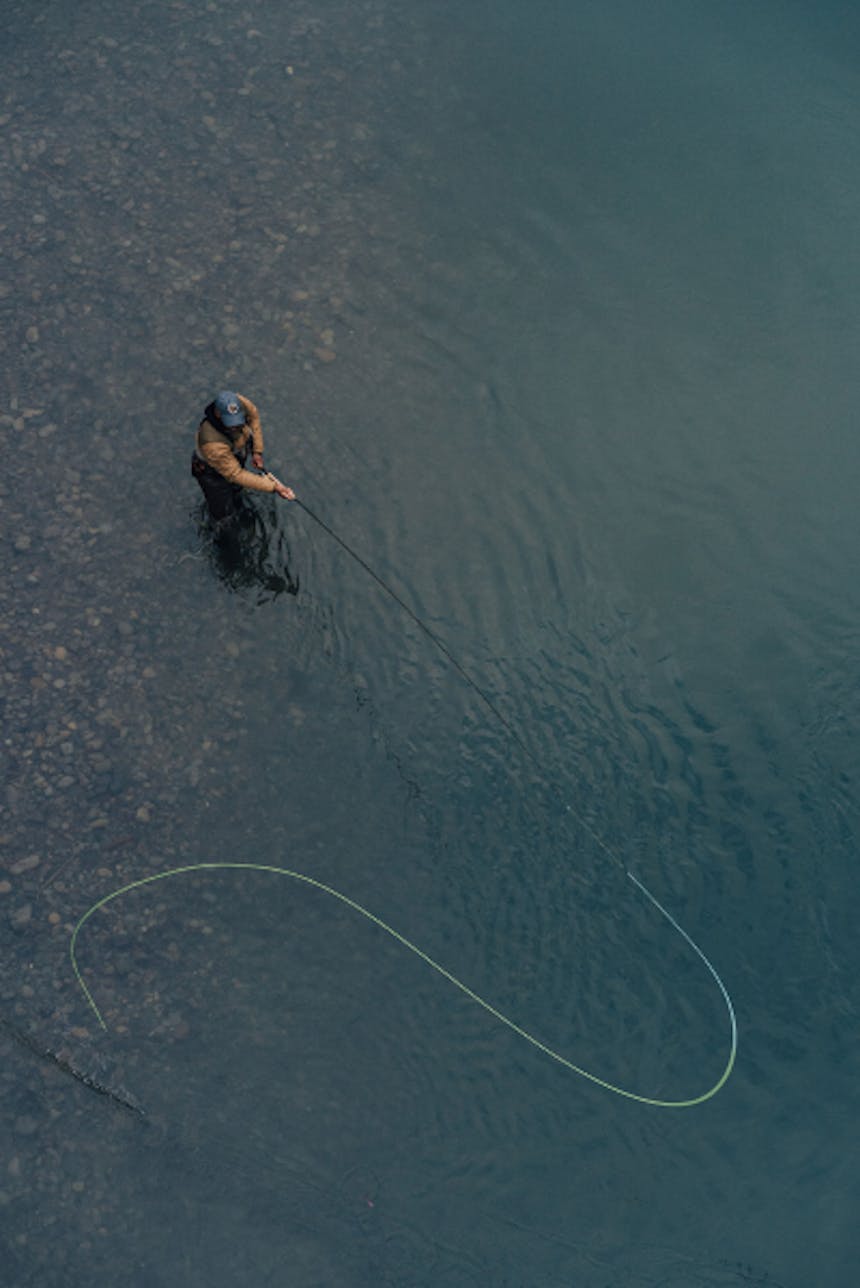
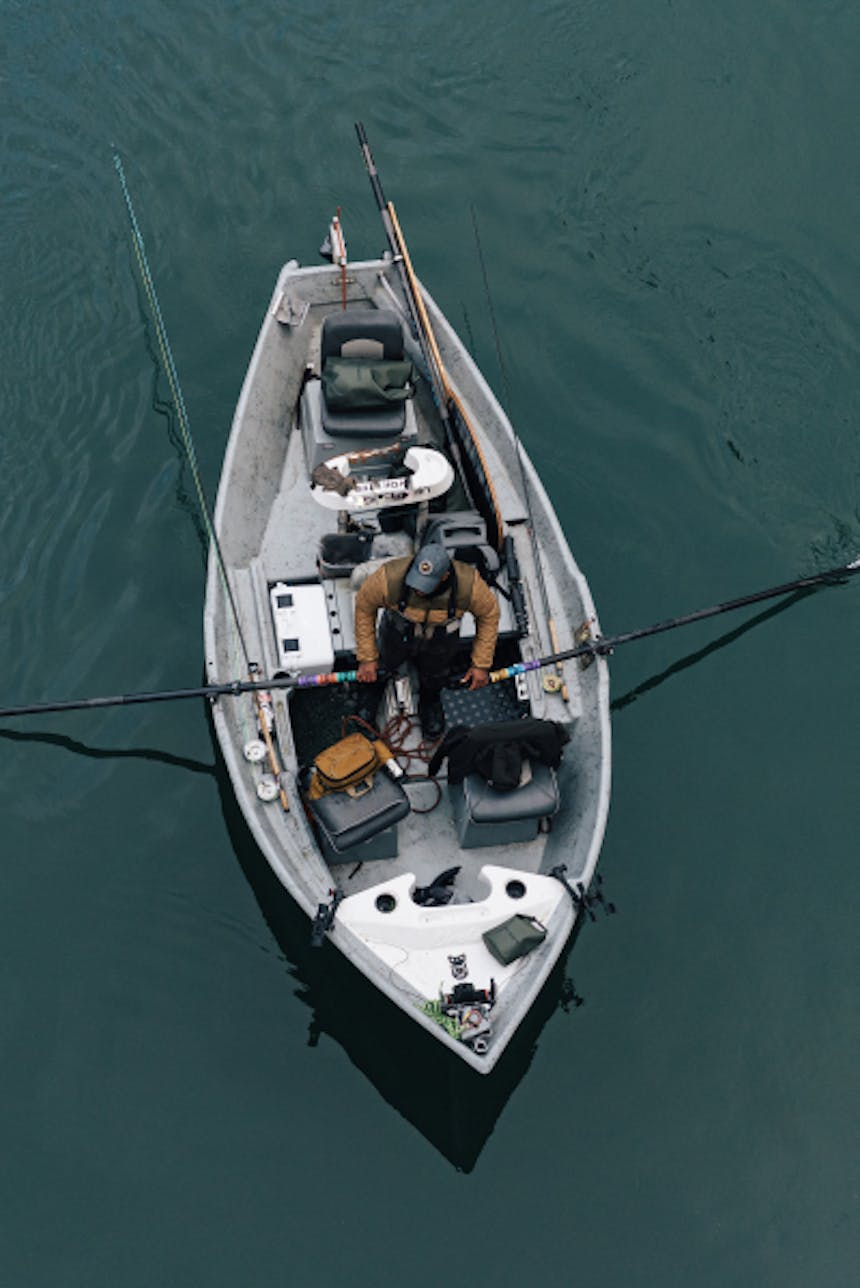
Second, I make my living chasing wild fish, and therefore this is my number one concern. I have guided for hatchery fish; in fact, that’s how I got my start within the industry. Once I saw the numbers of fish I was taking out of a river day after day and found fly fishing as a way to enjoy the fishery with less impact, I made a change. This change was right for me, but it is not for everyone. I still occasionally encounter a hatchery fish that is meant to be taken from the system or go out on personal trips to provide food for myself. So I do see both sides of the argument. Wild steelhead for retention has never been my target, and once the chase began all those years ago, it was evident to me that an encounter was all I needed, not food on my plate.
Before rods and reels, fishing began as a way for humans and other animals to feed themselves, not for sport, and I do not believe that tradition or way of life should be stopped. How do you get a child to care about the fisheries as an adult? Take them to a trout pond or local river and let them catch and keep a fish to share with family. Want an adult to feel proud about providing for family as well? Let them catch and keep a fish. Fishing for food has happened for generations before ours, and I believe it is wrong for it to be stopped. If your local river contains hatchery fish that feed your family or allow you to justify buying a fishing license for the sake of food, this option needs to stay. In turn, if the river feeds you, you will protect it; if not, then our gatekeepers of the river will disappear, and our streams will be subject to over-harvest, poaching, and pollution. Our rivers need any help they can get, and the more eyes we have on them, the better. All river systems do not need to support this way of thinking, and to keep those on different sides of the issue satisfied, having both hatchery and wild systems separate is necessary.
"My secret to catching the big fish isn’t the fly, though; it’s run timing. I know when he is going to be in the river and where he is going to be when the time comes. After that, I just need to cast and hold on when he eats."
WHAT’S YOUR FAVORITE FLY THAT YOU ARE SWINGING THESE DAYS? OR IS THAT YOUR LITTLE SECRET TO CATCHING MONSTERS?
I don’t have a favorite fly; I just like the one that works. Over the years, I have developed different patterns that I change depending on my size and color needs, but I only have three that I use consistently. The fly pictured in this story is called “A New Hope,” and it’s based on another fly I created called “The Night Crawler,” which can be found in the current issue of the Steelheader’s Journal. My secret to catching the big fish isn’t the fly, though; it’s run timing. I know when he is going to be in the river and where he is going to be when the time comes. After that, I just need to cast and hold on when he eats.
HOW LONG HAVE YOU BEEN A GUIDE ON THE OP?
I have been a steelhead and salmon guide for eight years, but it honestly feels like I just started. Driving into the Olympic National Park and other surrounding river systems on the Peninsula never gets old.
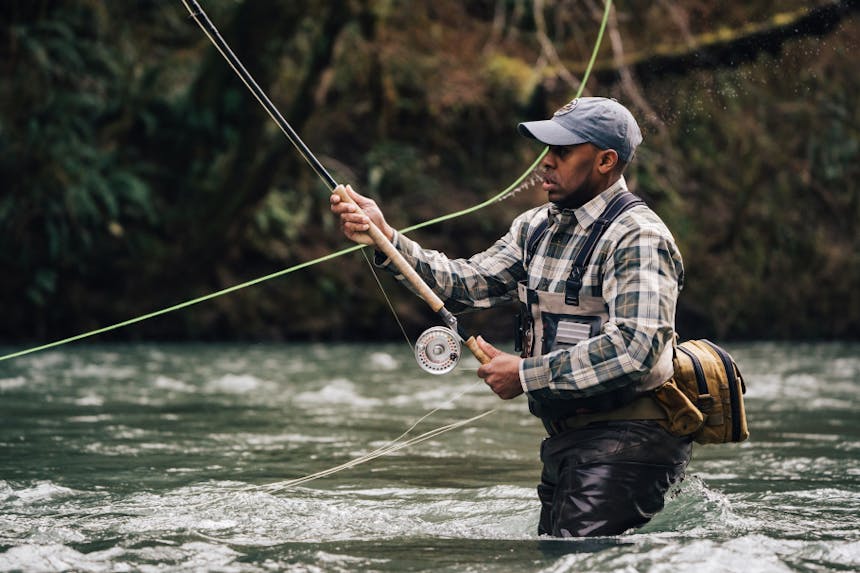
WHAT DRIVES YOU TO WAKE UP EARLY IN THE MORNING TO GET SOAKED IN THE RAIN DAY AFTER DAY?
When my alarm goes off, just like anyone else, I want to stay in a warm bed, especially when the weather calls for freezing temps and a chance of rain. What puts my feet on the floor every morning, however, is the chance that I or someone else on board is going to have the best fishing day of our lives. If being a steelhead or salmon guide was easy, I wouldn’t like it. I am the type of person that wants a challenge every day, and I want the effort put into the challenge to yield positive results. Fishing in the Pacific Northwest does that for me, daily.

